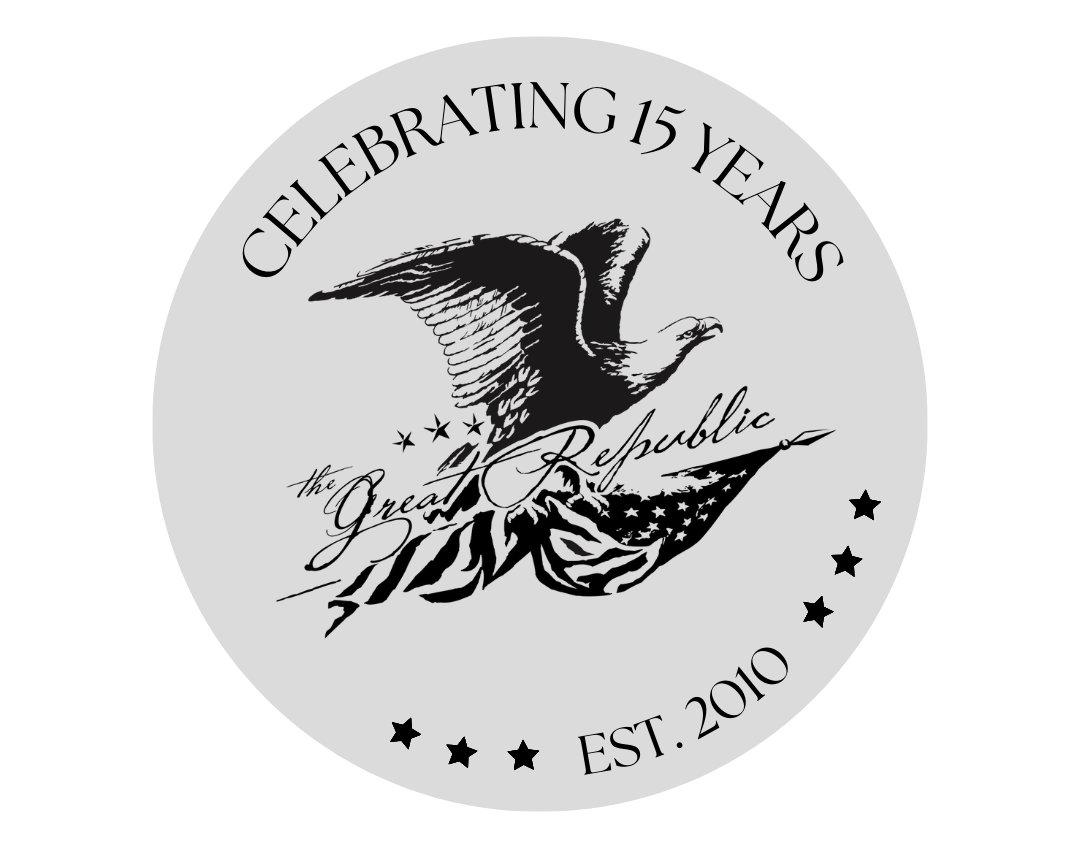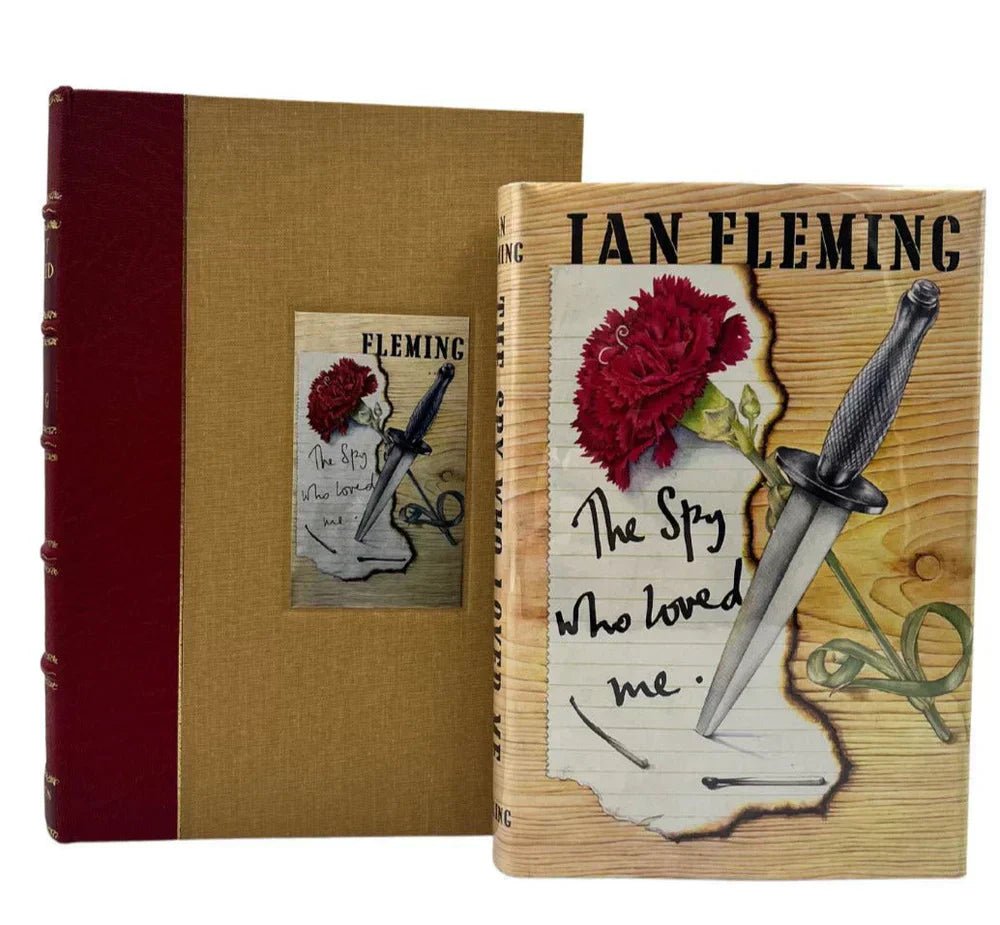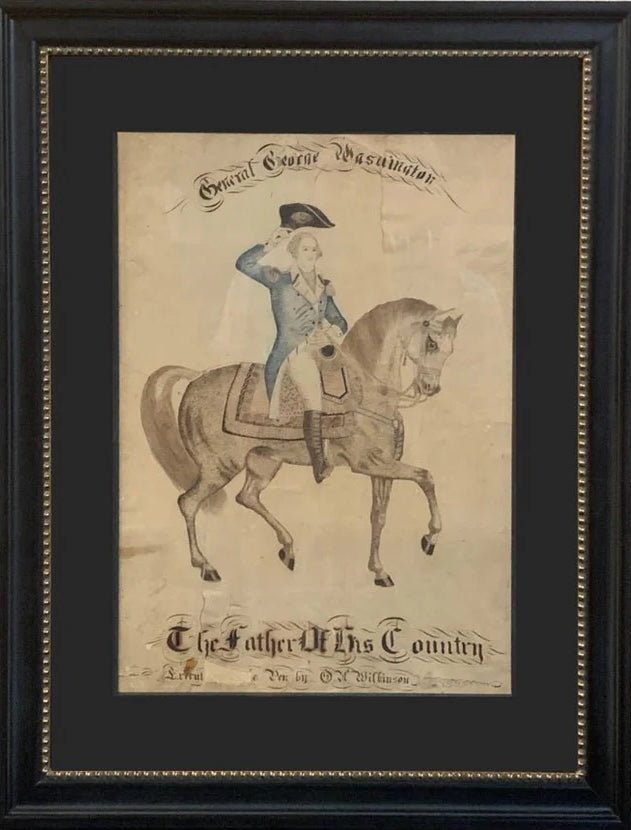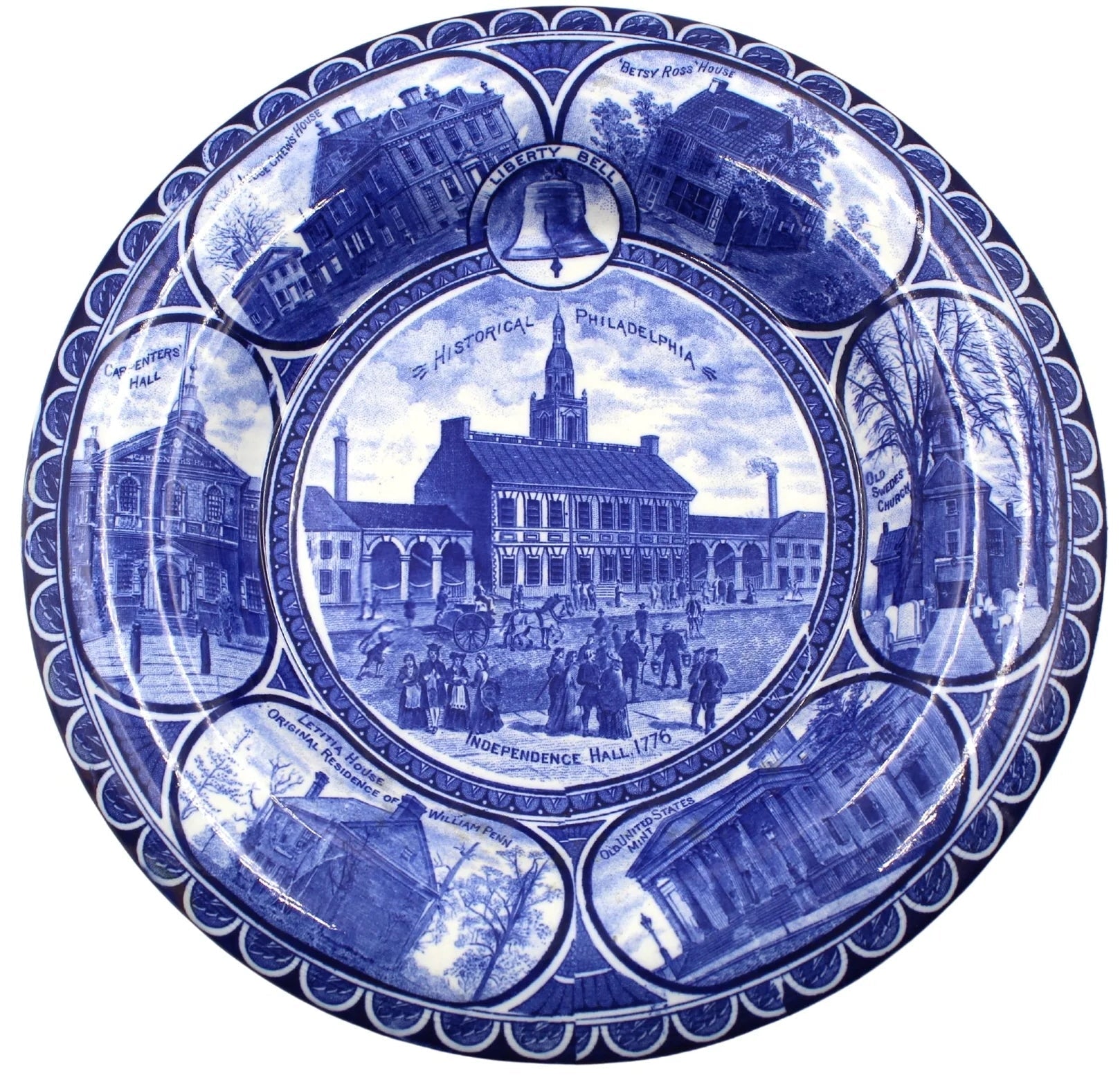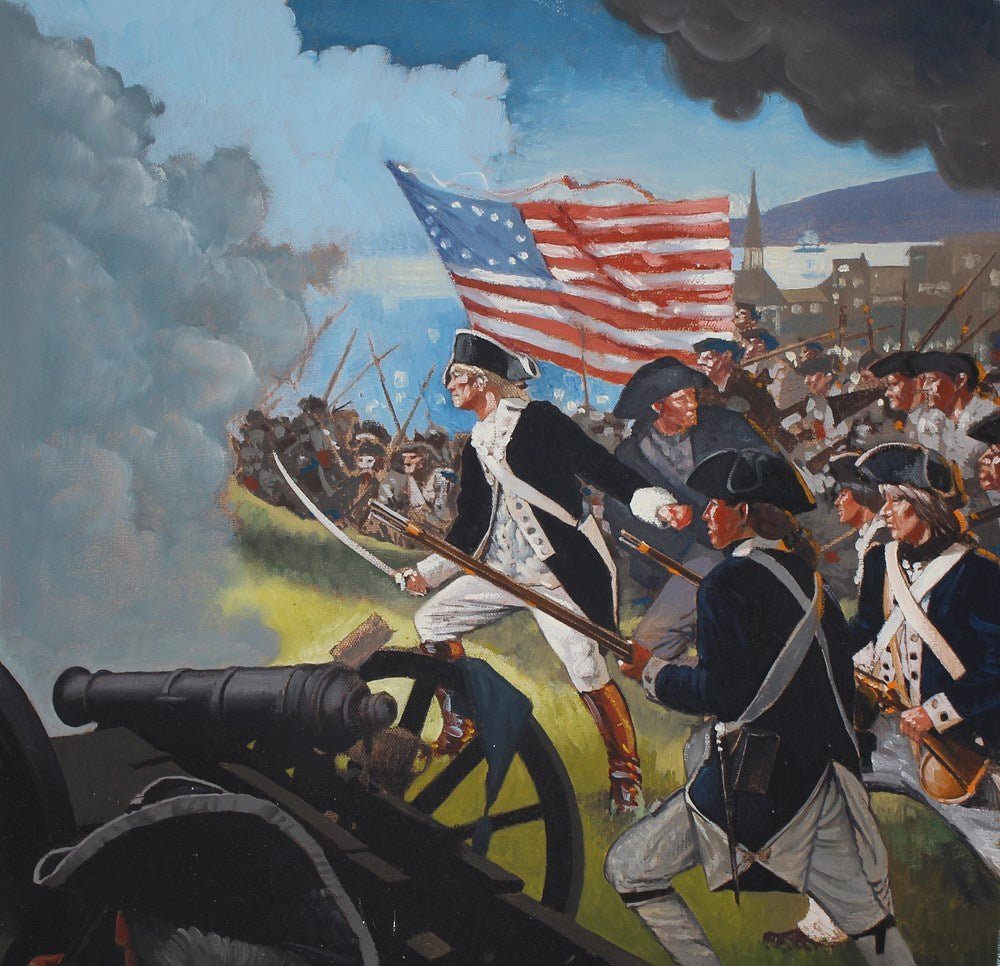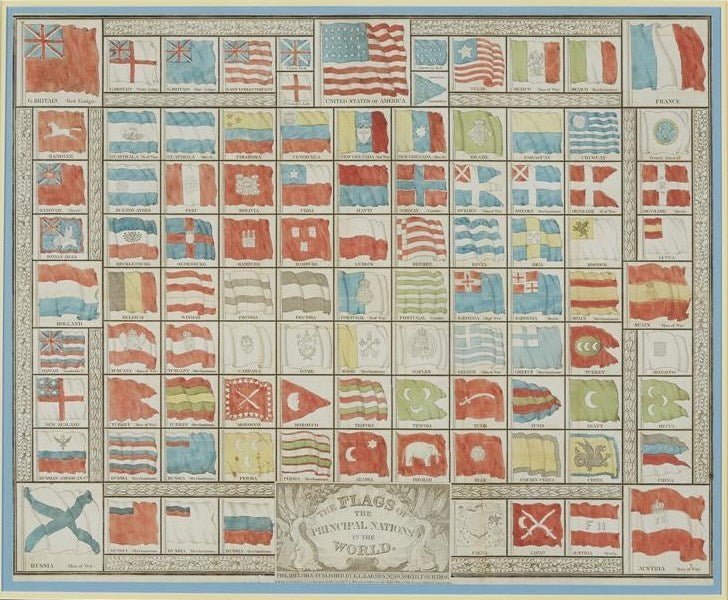Check out this Declaration of Independence Broadside from the 1840s
Hanging on our Colorado shop walls is an ornamental engraved broadside of the Declaration of Independence. The broadside was designed by William Woodruff, engraved by Story & Atwood, and published by Phelps and Ensign in New York, in 1841-43.
A beautiful work of engraving, the composition is oval in shape, with the top formed by an amassing of draped spears and trumpets, surmounted by an eagle clutching arrows and laurel leaves in its talons. A bust portrait of General George Washington, engraved by Stephen Gimber, accentuates the top of the document, with bust portraits of Jefferson and Adams on each side. The text of the Declaration is engraved in a uniform round hand, with decorative emphasis given to the first two lines of the document. The signatures of each signer are skillfully replicated at the bottom. A vine border, punctuated with the seals of the thirteen original states and six pointed stars, encircles the whole text.
The Declaration of Independence is the foundational document of the United States and has been printed many times since its original publication in 1776. First published as broadsides, then as an essential addition to any volume of laws, it is a basic work in the American canon.
Following the War of 1812, Americans began to look back on the era of the founding of the country, for the first time with historical perspective. The republic was now forty years old and the generation of the American Revolution, including the signers of the Declaration, was looking for a way to record all it had accomplished and witnessed. With nostalgia and curiosity, many Americans began to examine the details of the nation’s founding. Documents like the debates of the Constitutional Convention, first laws of the United States, and the Declaration were published for the first time.
It seems extraordinary that the Declaration of Independence, as created, was unknown to Americans, as the text is so central to the national ego. Yet besides traveling exhibits of the original document, many Americans had not seen or read the text. Several entrepreneurs set out to bridge this gap by printing broadsides of the document.
The first to publish a Declaration broadside was a writing master named Benjamin Owen Tyler, who created a calligraphic version of the Declaration and published it in 1818, recreating exactly the signatures of the signers as they appeared on the original. We have a beautiful impression of the 1818 Declaration by Tyler, shown below, currently hanging on our Colorado shop walls.
Another early engraver to work on a Declaration project was Philadelphia newspaper publisher John Binns. As early as June 1816, “Binns began a list of subscriptions for his publication of ‘a splendid and correct copy of the Declaration of Independence, with facsimiles of all the signatures, the whole to be encircled with the arms of the thirteen States and of the United States.’” The enormous scale of Binns’ design delayed publication almost three years until 1819, which gave ample time for engraver William Woodruff to publish a broadside of the Declaration almost identical to Binns’ work.
After seeing Woodruff’s printing, Binns filed a lawsuit stating that Woodruff had stolen his design while serving as a journeyman for one of Binns' employees, a man named George Murray. Yet, Woodruff’s engraving of the Declaration contained signatures in a uniform round hand, not facsimiles, and replaced the portrait of John Hancock with one of John Adams. The lawsuit was unsuccessful, but the very public feud between Woodruff and Binns and newspaper coverage surrounding the lawsuit increased interest in and sales of both their broadsides.
Woodruff’s engraved plate went through several other owners in the 1830s and 40s, including the New York publishers of Phelps and Ensign. The 1841-43 printing offered here is a variant of William Woodruff's 1819 engraving. Phelps and Ensign made slight changes to the 1819 plate. This 1840s version contains new engravings of the State Seals, an updated engraving of Washington by Stephen Gimber, and the signatures reengraved in facsimile, to better match the original Declaration.
Produced some twenty years after Woodruff's original, this excellent Phelps and Ensign edition testifies to the steady popularity of this Broadside and the public’s interest in patriotic documents.

